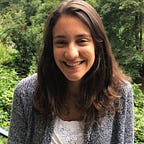A trip to (and a escape from) Morocco’s ‘blue pearl’
Chefchaouen, the charming ‘blue pearl’ in the Northwest of Morocco, is geographically perfect for isolation. Tucked away in the mountains, the 564 metre-high town, where little more than 42,000 people live, got its name because the hills surrounding it look like two goat’s horns. For locals, it is simply Chaouen. Even though tourists are increasingly roaming its narrow streets, instagramming as they go, the numbers are still far lower than in cities like Marrakech. In times of Covid-19, it seemed like the perfect location to end our Moroccan trip.
…Until we met an Irish backpacker in the Kasbah, the 15th century fortress where Chefchaouen was founded as a base to attack Portuguese invaders. In fact, we were standing at the top of the Portuguese Tower, a structure built by prisoners, when our trip came to a sudden (and quite expected, if had been following the news) halt. The Irish backpacker approached us and asked if we had heard the news: all flights to Spain and France were cancelled because of the pandemic. Our flight back stopped in Bordeaux.
“I had a flight home yesterday, but I decided to stay here longer”, he explained, his faltering tone half-way between amused and worried: “ I don’t really know what to do now, but I guess Chefchaouen is not a bad place to be if you need to be in isolation.”
He was not entirely wrong, if you look at it from a historical perspective. After the Spanish Reconquista of Andalusia, many Muslims and Jewish refugees settled in Chefchaouen. The town was so isolated that, when Spanish troops arrived five centuries later, in 1920, they were surprised to hear Jewish settlers using medieval Castilian words and expressions that, for them, were long forgotten.
Obviously, these associations only came to mind later. That brief conversation broke the holiday-spell and threw us into reality’s hot cauldron. After thanking the backpacker and wishing him luck, we rushed through the alleys to our hotel. I packed everything while my husband frantically tried to find us another flight home. Every minute, we asked ourselves if we were overreacting and if we should just carry on with our plans. I’m glad we didn’t. We got to the bus stop twenty minutes before the last bus to Fès left the station and, luckily, there were still tickets available.
The four-hour drive through a peaceful landscape, with herds of sheep scattered across the darkening green fields, was not able to sooth us. A quick connection to the wifi at the mid-way stop confirmed what we already knew — our flight was really cancelled and few alternatives were available. We got to Fès around 11 pm, jumped in a taxi after the usual price haggle and got to the hotel Medina Social Club, whose very helpful and kind manager let us move our booking forward.
The airport didn’t have the massive queues I expected — I am always in favour of getting to the airport early and, even facing cruel and unmitigated mockery from my husband, I try to stick to my principles. We bought a cold turkey sandwich from the one of the two snack places open and sat for three hours waiting for the flight. The Irish backpacker was nowhere to be seen. Few people wore masks to cover their mouth and noses, but there was an anxious atmosphere.
Once inside the plane, the captain announced that we would have to wait for another hour. There was a problem with the Spanish air space and we might have to fly over Portugal instead. Later, there was a commotion and the crew kicked a couple out of the plane, while other passengers applauded. Apparently, the guy was drunk and being abusive to his wife and those around them. Both of them were left behind. A prayer to Allah preceded AirArabia’s plane take-off (as a Brazilian, I am used to religion being mixed with every aspect of life, but it was the first time I witnessed an open religious demonstration like this on a flight. Despite my atheism, it almost felt appropriate.)
One day after we arrived home, Morocco announced it was going to suspend all international flights. We were lucky to be home, even though a much more worrying problem lies ahead of (all of) us. As quarantine started, I set myself to organizing the photos of the trip. Locked in a tiny apartment in London, I missed Chefchaouen’s blue ‘isolation’. The reason most houses of the Medina are painted with different shades of blue is still open to debate. The most poetic explanation is that the Jews who settled there after fleeing 1930s Germany chose this colour as a symbol of heaven; the most practical, that blue keeps the mosquitoes away.
Whatever the reason is, it makes Chefchaouen unique. When times are better, it is definitely worth setting aside two days to stroll around the streets and take a look at the colorful shops and cute cats; climb the hill to the Spanish Mosque, where you have the best view of the town; visit the Kasbah properly and without rushing (unlike we did); listen to local musicians on Cafe Clock’s terrace; have a delicious tagine at Lala Mesouda; and possibly meet a helpful and friendly Irish backpacker when you least expect it.
